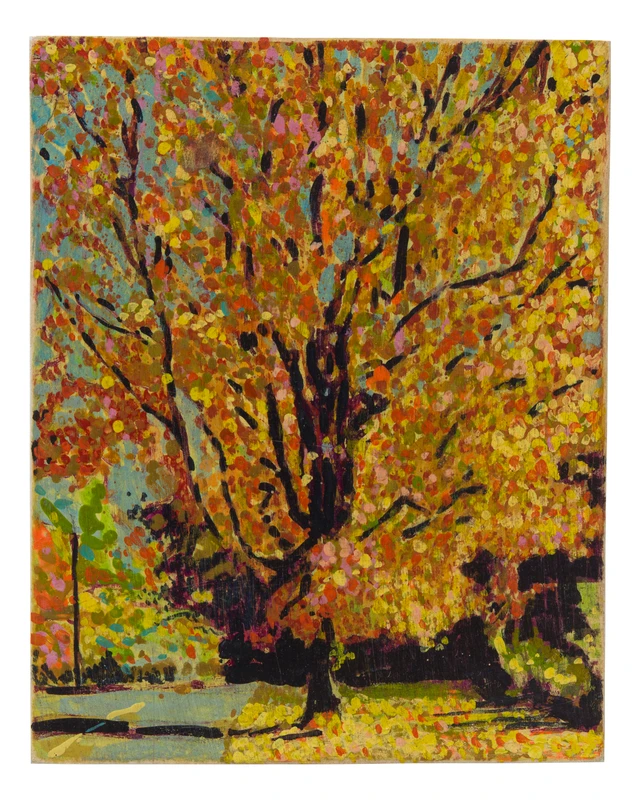John Maclean: New Paintings. Part I
14 Sep-28 Oct 2023
PV 13 Sep 2023, 6-9pm


The Approach is pleased to present John Maclean New Paintings; a continuation of the body of work Maclean produced for his Annexe show earlier this year.
Maclean studied at the Royal College of Art in the mid-90s under contemporary British painters such as Chris Ofili and Peter Doig, however his other interests took him in the direction of a career in music and film making. With his film projects on hold during the pandemic and needing a creative outlet for his ideas, Maclean returned to painting after a twenty-year hiatus.
Landscapes seemed to be an obvious subject matter for Maclean to work with; growing up in the Scottish Highlands surrounded by dramatic, almost romantic, surroundings, he always had a strong relationship to the natural environment. Landscapes also play a central role in his films: in Slow West, the film Maclean wrote and directed in 2015, and with his forthcoming feature-length project Tornado, the landscape is framed as a protagonist – the same can be said for his paintings, where he foregrounds mountain ranges, trees, rivers, valleys, snow scenes, hills and fields.
Maclean enjoys that there is something both generic and specific in the landscapes that he chooses to paint; narratives within the work are elusive and open-ended, allowing the viewer to project their own memories and associations onto the work. In this latest series, there is perhaps more specificity of location, indicated by titles such as Americaor in depictions of Egyptian pyramids, tropical jungle scenes or when Maclean drifts between seasons, yet the scenes still feel ubiquitous, familiar and easily relatable.
Working at a uniform and modest scale of 30 x 22 cm, Maclean uses watercolour to produce his paintings. During lockdown he was able to experiment and test materials, scale and technique, eventually settling on a process of thickly applying watercolour paints to flat-lying ready-made wooden boards. He then uses a process of sanding down the paint to reveal a ‘ghost image’, before painting over it again (and again), building up a palimpsestic surface of many layers of paint until he is satisfied with the final image.
Maclean finds his source material (the landscape postcards) via deep-searches online, translating the image directly from his computer screen as he paints onto board. Maclean was drawn to the inconsistency of these vintage postcards, which are often poorly printed in black and white, hand-tinted in unnatural hues and out of register – both painterly and photographic, but lacking authenticity. Maclean enhances or saturates the colour of the original images, preferring to focus on tone over colouration to create textural and dynamic surfaces, a technique borrowed from his film-making. He begins with a small colour detail that ultimately informs the rest of the painting, emanating outwards like a psychedelic hum, edges softening within the painting. This gentle intensification of colour disrupts the naturalness of the landscape scene, placing it at odds with the artificiality of the palette, evoking the slippage of authenticity found in the postcards themselves